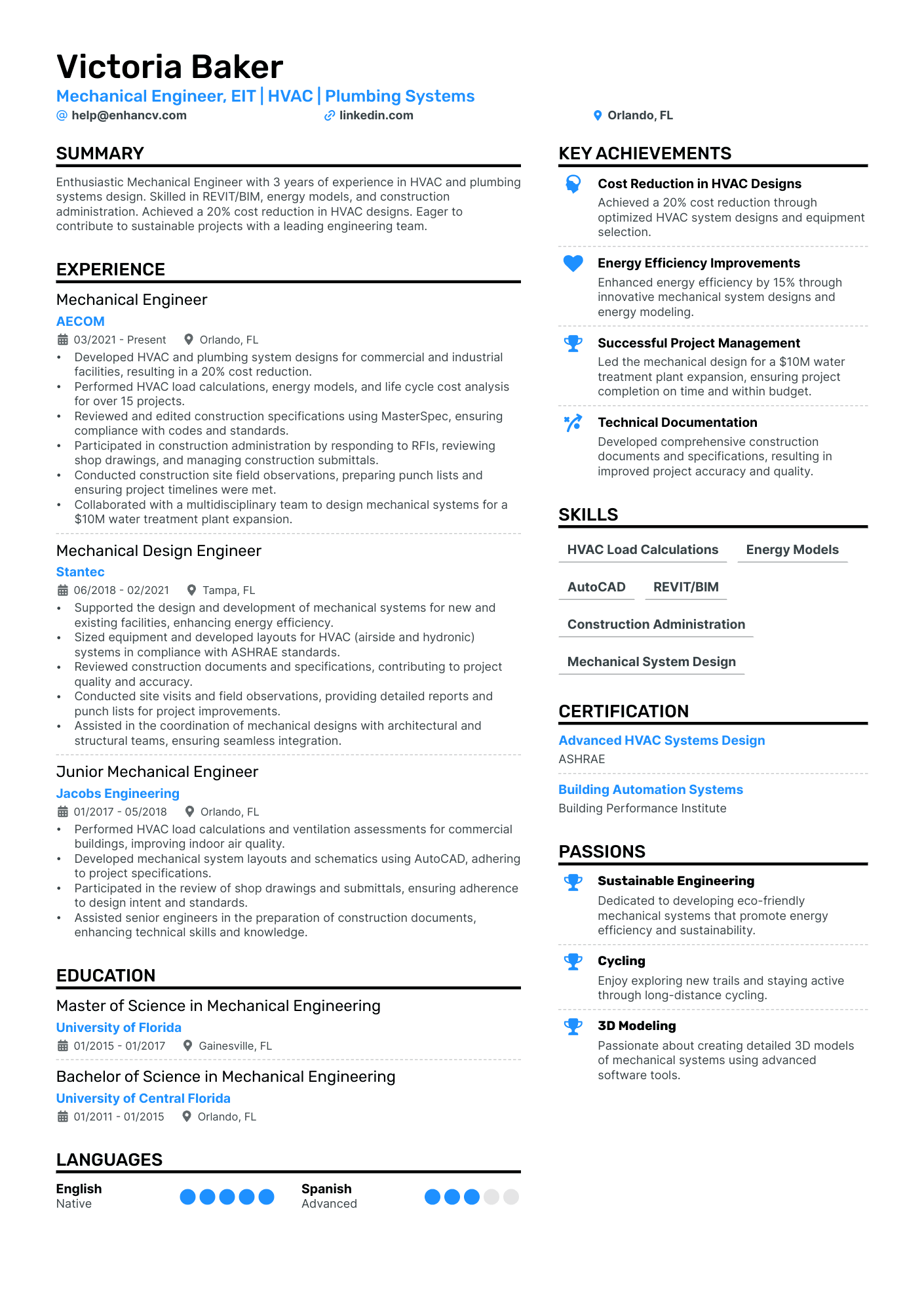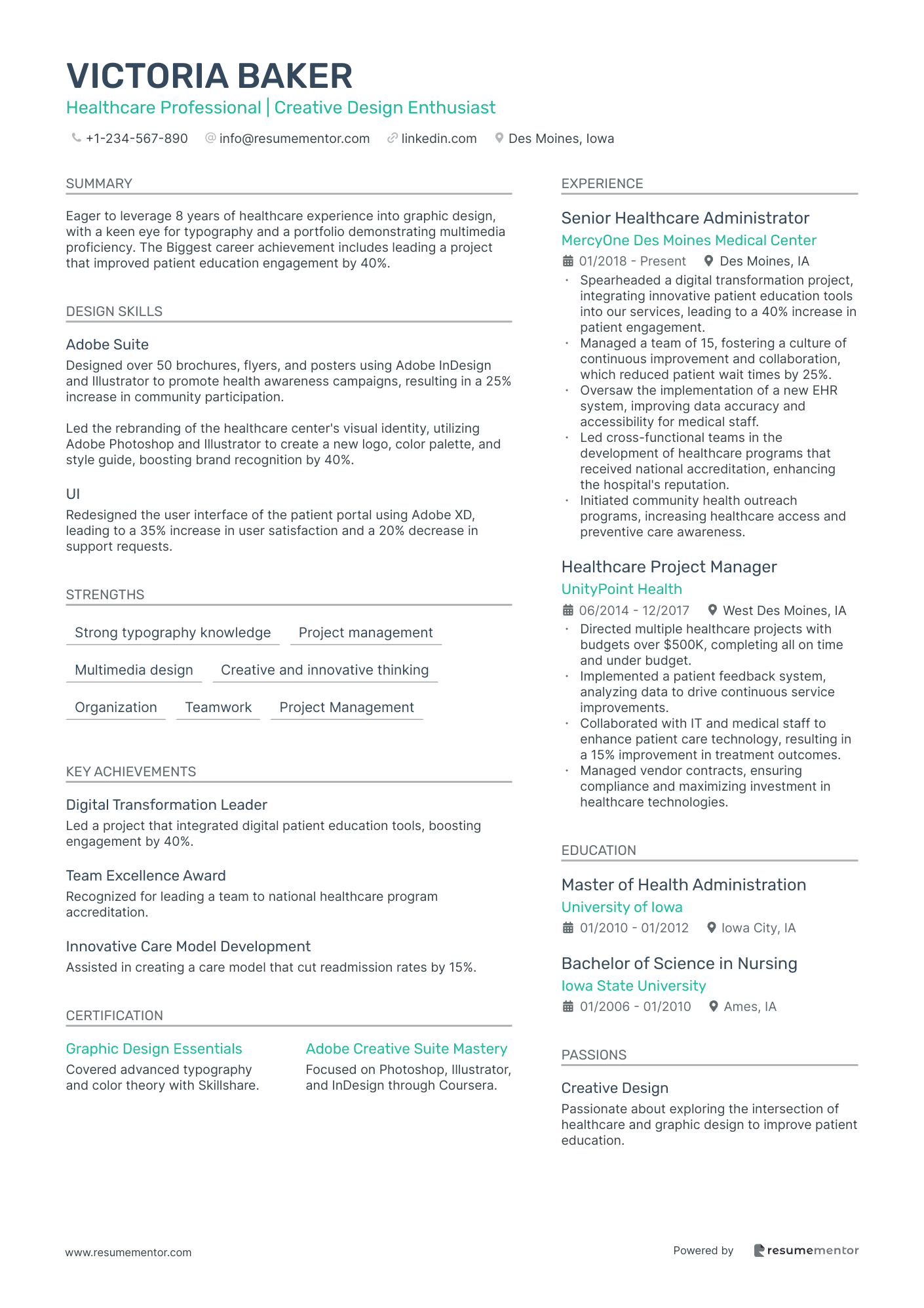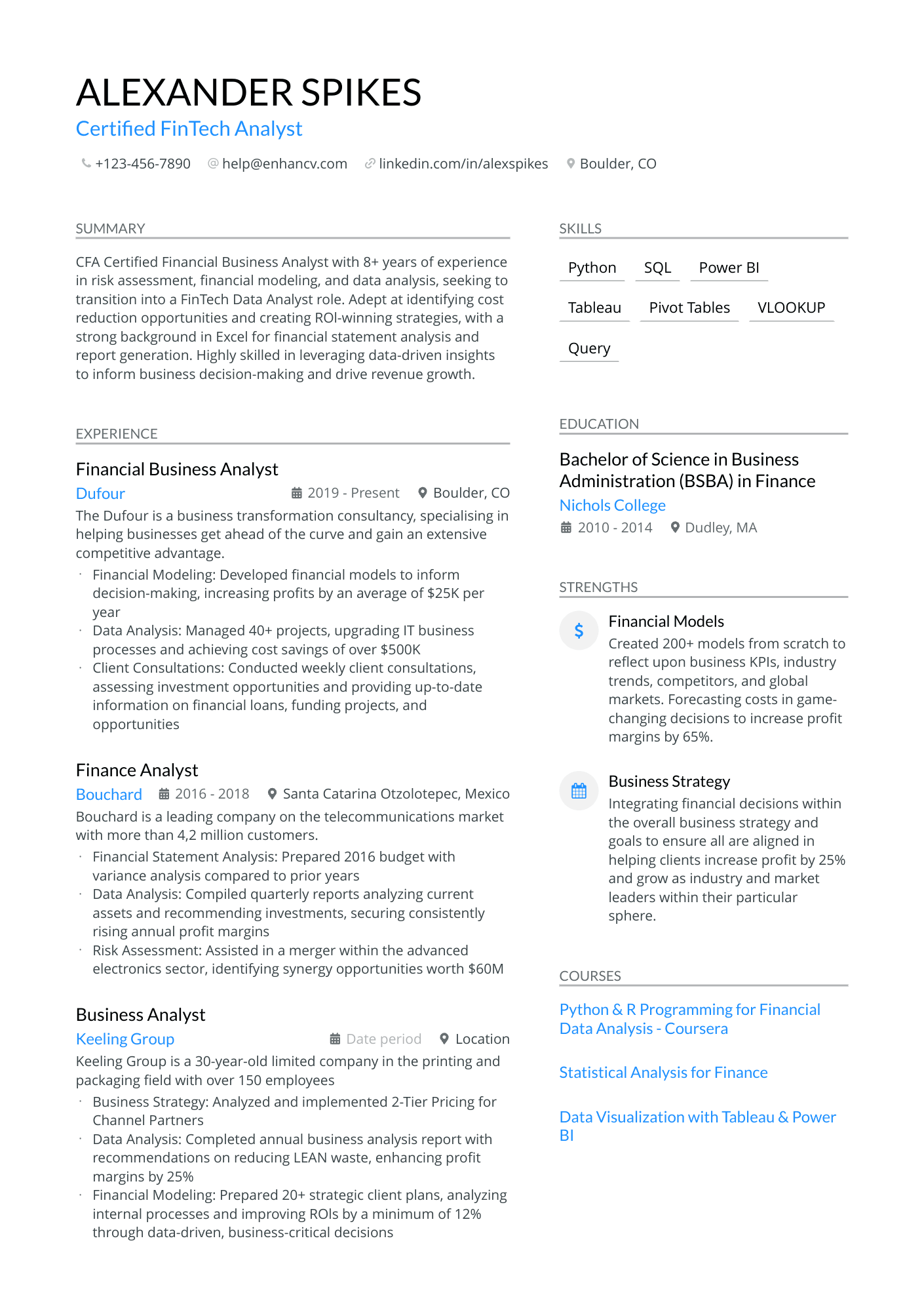What is a Resume? Full Resume Definition & Purpose, Explained

Nov 21, 2024
|
12 min read
Having a strong resume boosts your chances of job-search success.
Applying for jobs? Your resume is a brief document that covers your educational history, work experience, and core skills. Essentially, it’s marketing material you use to “hook” the hiring manager’s attention.
You only get one chance to make the right first impression. When you’re searching for new roles and applying for them, you’ll need a strong resume. After all, this is the first thing the hiring manager will see.
Key takeaways
- A strong resume is the key to your job search success. Position yours correctly, and you’ll be more likely to land interviews and ultimately get hired.
- Start by getting to know each of the resume sections. Understanding this will help you to write a stellar application that makes a real impression on the reader.
- Choose the right type of resume format for your job level and needs. We’ll cover the three main options later in this guide.
- Always tailor your resume to the job and company at hand. This small but important approach instantly boosts your chances of getting noticed.
In the following guide, we’ll be taking a deep dive into the definition of a resume, the purpose of a resume, the different sections of a resume, and the types of resumes. Sit tight—here’s everything you need to know.
What is a resume?
First things first, let’s start with a resume definition. A resume is a summary of your professional achievements and experience so far. The word actually comes from the French, meaning “summary”.
Resumes typically include the following elements:
Main sections of a resume
- Resume Header: This consists of your name, job title, and contact details.
- Resume Summary or Objective: A short statement about your professional life.
- Work Experience section: Recent work positions from the last 10-15 years.
- Education section: Details of your educational history and schooling.
- Skills section: Bullet-pointed list of your core competencies.
Resumes vs. CVs
Resumes are often called CVs (curriculum vitae) in other countries. For example, in the UK and most other European countries, it’s more common to use a CV than a resume. However, in the United States, the correct term is most often “resume.”
Of course, there’s one major exception to this rule. If you’re an academic applying for positions in colleges or institutes, you may be expected to submit a CV. Unlike a standard resume, this document is typically longer than one or two pages and includes a detailed appendix of published work.
What is the purpose of a resume?
The main purpose of a resume is to land a job interview. When applying for roles, most recruiters will ask you to submit a resume (and often a cover letter!). The document aims to get their attention, show them you fit the job criteria, and ultimately have them invite you for an interview.
Is your resume good enough?
Drop your resume here or choose a file.
PDF & DOCX only. Max 2MB file size.
However, there are many other benefits of having a strong resume, as follows:
Benefits of a strong resume
- Create a good first impression: As we’ve mentioned, your resume is the first thing a hiring manager will see. It needs to make a big impact on the reader!
- Showcase your value: A well-written resume highlights your relevant work experience, skills, and qualifications—all of which give your application value.
- Match the company’s needs: Tailoring your resume to meet the company’s needs and the vacancy criteria is the way to go.
- Demonstrate your professionalism: A strong resume shows the hiring manager that you’re a professional. This is half the battle when applying for roles.
What are the key sections of a resume?
Now we’ve covered the definition of a resume, and it’s time to break it down. These documents are broken into specific resume sections, each of which serves a clear purpose. In this next part, we’ll be looking at each part and sharing some clear examples.
Resume header
Your Resume Header is where you share your contact details, your full name, and the job title you’re targeting. If appropriate, you can add a professional headshot to this area. You may also include hyperlinks, such as a link to your LinkedIn page, your portfolio, or a professional website. It’s important to display this information clearly for the reader.
Here’s an example of a good Resume Header:
Professional summary or objective
Directly below your Resume Header, it’s typical to add a short professional statement. You have two choices—you can write a VProfessional Summary or an Objective.
A Summary is a two to four-sentence bio that covers your professional experience and achievements so far. It’s like a snapshot of your career history, which tells the hiring manager what you bring to the table. It’s important to be selective about what you share. Highlighting your unique selling proposition (USP) is a simple way to get the reader’s attention. Focus on your strongest accolades, experiences, and skills.
Let’s take a look at a good example of a Summary:
It’s best not to include any personal pronouns in this statement. Save yourself some space by writing in the third person and leaving out any mention of “I” in this paragraph.
Supercharge your Summary with metrics!
Want to give your Summary some extra oomph? Add metrics—such as numbers and statistics—to give your statements more value. The more specific you are in this part of your resume, the more likely you are to get the reader’s attention (and keep it!).
If you’re new to the working world, or you’ve changed careers, you might want to include an Objective instead of a Summary. This is a short paragraph about what you PLAN to do rather than what you’ve done. For that reason, write about your goals and where you see your career going. Remember, you need to align with the hiring manager’s needs so tailor this statement to them.
Check out our example of a well-written Objective Statement:
Refer back to the original job advert to see what the role criteria specify. You can use this information to tailor your Resume Objective to the vacancy you’re applying to.
Work experience section
Next up, you’ll need to list your previous work experience. As a general rule, include between three and four former positions and ensure they’re relevant to the vacancy. If you’ve had a long career, you don’t need to add every position you’ve ever held—go back no further than 10-15 years.
You can start out by including the basic details of the role; i.e. the name of the company, your job title, and how long you worked there. Below that, you should include bullet points. These need to cover the achievements you made during your time with the business.
The language you use here matters. You want to make sure it’s persuasive and dynamic. Use powerful verbs that highlight the impact your work had. Also include metrics wherever possible. Facts, numbers, and statistics bring some much-needed color to your work experience section.
Use our Work Experience section example for inspiration:
- •Contributed to social media strategy that increased followers by 25% within three months.
- •Collaborated with the team to create compelling content for marketing materials and blog posts.
- •Conducted market research to identify trends and customer preferences, enhancing campaign effectiveness.
- •Achieved top sales associate status, exceeding sales targets by 15% each quarter.
- •Developed strong customer relationships, resulting in a 30% increase in repeat business.
- •Trained new employees on product knowledge and sales techniques.
Education section
Your education section is your chance to show the hiring manager how qualified you are. Use the reverse chronological order when listing your education. For example, your college degree would sit neatly above your high school education and so on. You can add details, such as your GPA (as long as it’s over 3.5) and any honors, such as cum laude, you’ve got.
Do you have extra training or certificates? Don’t forget to add them into this section of your resume. The aim is to show off what elevates you above the competition. With that in mind, if you’ve ever completed on-the-job training or college courses, now is the time to shout about them.
Take a peek at our education section example below:
- •Graduated with Honors in Marketing.
- •Dean's List for six consecutive semesters.
Skills section
Your Skills section includes your most valuable competencies, which can be listed as bullet points. As a well-rounded candidate, you should have a wealth of both hard and soft skills under your belt.
Hard skills
Include only hard skills in this part as these have the most impact. Ensure each skill you include directly aligns with the role you’re applying for. Hard skills apply directly to the role and are often technical. For example, they may be competencies you’ve picked up in vocational training or on the job.
Soft skills
You can hint at your soft skills throughout the rest of your resume, but you don’t need to list them as bullet points. Soft skills help you to do your job and are often transferable. Examples include communication, organization, time management, and people skills.
Here’s a good example of a resume Skills section:
If you want to be more specific, add a proficiency rating to each of the provided hard skills. In the above example, we’ve used a star rating as a visual pointer for the reader.
Always refer to the job advert!
Not sure which skills to include on your resume? Go back to the original job advert and take a look at the core criteria. You can find the competencies you need for the role there. Be sure to list any you already have on your resume when applying for the job.
Optional resume sections
If you’re looking to bolster your resume, you might want to add some optional elements. Examples include sections for Awards, Publications (ideal for academics and researchers), and Interests. These extras may help your resume to stand out from the sea of other applicants.
For example, whether you lack direct work experience in your sector or are new to the industry, it may be worth including volunteer work. Make sure that this is relevant to the position you’re applying for. You can lay it out the same way you would structure your work experience section.
Look at our Volunteer section example here:
- •Organized and managed volunteer activities for over 200 participants.
- •Coordinated fundraising events that raised $15,000 for local housing projects.
- •Provided one-on-one tutoring for underserved youth in math and reading.
- •Improved student test scores by an average of 20% over one year.
What are the different types of resumes?
Now you know what to include on your professional resume, we should talk about its layout. Getting the format and structure right is a must. There are three main types of resumes you may consider.
Chronological resume
First up, the chronological (also known as the reverse chronological) resume format is the most common. This structure displays your experience and education in the order you completed it. If you’ve had a linear career path, you should use this format for your applications.
Let’s take a look at an example below:
Functional resume
Want to emphasize your skills over your experience? A functional resume format does just that. This layout groups your experiences and education by your competencies. It’s ideal for people who are switching careers or happen to have more skills than direct job experience.
Here’s an example of how that looks in practice:
Combination resume
Finally, as the name suggests, the combination resume format combines the two above layouts. It’s the best of both worlds. If you’re not sure which option works best for your needs, this could be the answer.
Check out an example of a combination resume:
PRO TIP
Create a powerful resume in minutes!
Building a great resume doesn't have to be hard. With our drag-and-drop resume builder, you can quickly make an eye-catching resume in minutes. Choose from one of our attractive resume templates and get started now.
Tips on how to write a strong resume
By this point, you should be ready to craft a perfect resume. However, there are some extra tips you need to keep in mind.
Before you get started, take a look at the following advice:
- Use professional (but simple) language: Don’t bamboozle the reader with jargon. Adopt a professional tone and simplify your phrases.
- Tailor your resume to the job: Always tailor your resume to meet the needs of the job you’re applying for.
- Include bullet points and white space: Avoid overwhelming the reader with huge blocks of text. Instead, add bullet points wherever possible and get the spacing right.
Conclusion
Your resume is your most important tool when searching for jobs. Ensuring you have a strong resume gives you the best chance of landing an interview and getting a job offer. Use the advice we’ve shared in this guide to craft a stellar document that turns heads.
Related Articles

Continue Reading
Check more recommended readings to get the job of your dreams.
Resume
Resources
Tools
© 2025. All rights reserved.
Made with love by people who care.



